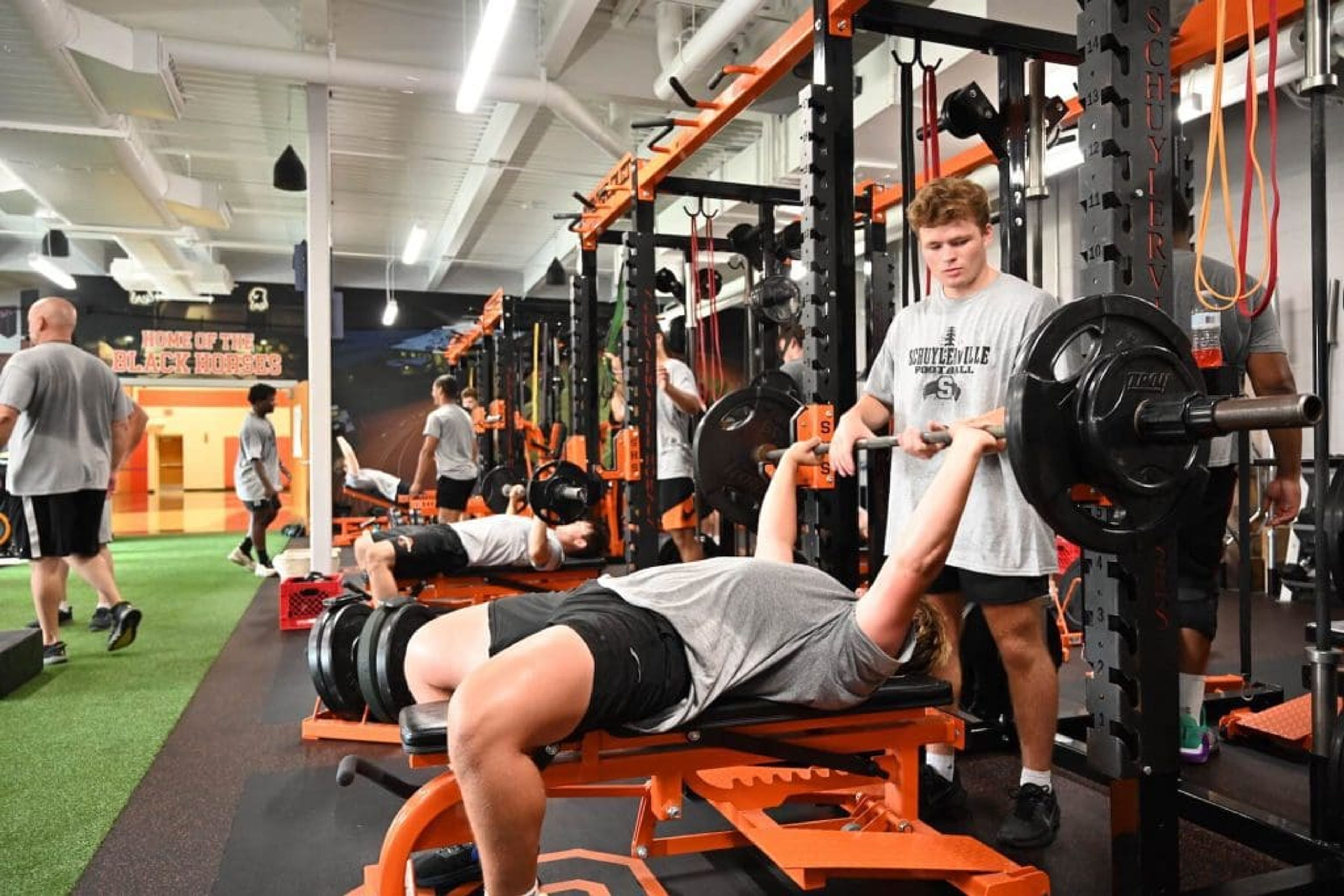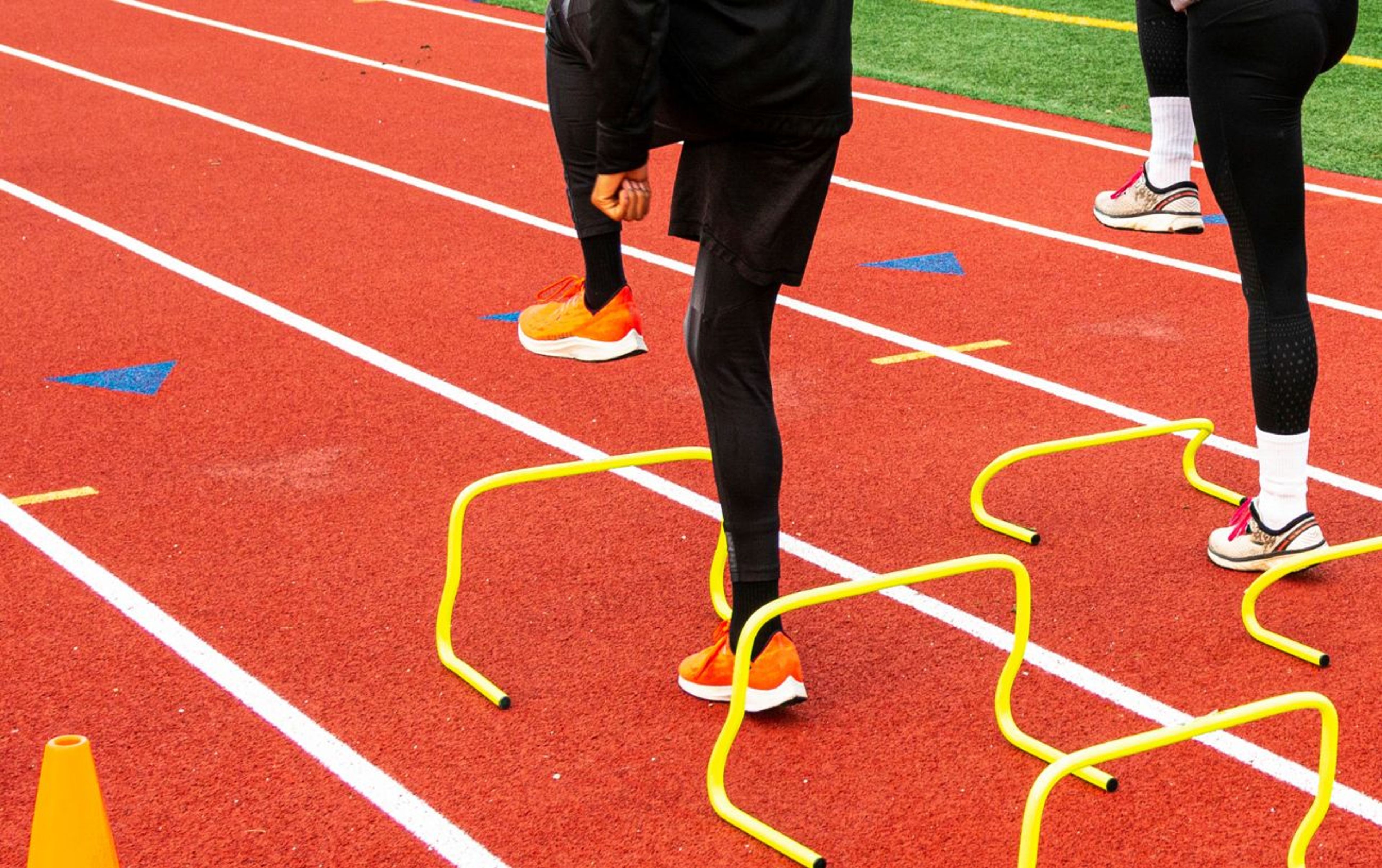The Essential Pole Vault Drills
Discover the most effective pole vault drills to improve your technique, boost performance, and master every phase of the vault with this expert guide.
Pole vaulting is a technical event that requires mastering multiple phases, from the approach to the takeoff, swing, and finally, the push-off. This isn't a sport that can be mastered overnight and it takes a special type of individual to put in the time, and do the pole vault drills, it takes to make it to the next level.
In this guide, we'll cover essential pole vault drills, tips for structuring practices, and expert insights to help athletes progress from beginners to elite vaulters.
Why Pole Vault Drills Are Crucial
Before diving into specific drills, it’s important to understand why drills matter.
A pole vaulter who doesn't understand the 'why' behind the drills will struggle to see the benefits translate into competition. Knowing why you're training a specific way creates purpose and intention—more important than the reps themselves. When athletes connect their drills to real outcomes, it drives focus and accelerates performance improvements.
Each phase of the pole vault, from the pole carry to the final push-off, requires precision, power, and timing. Drills help break down these phases, allowing athletes to focus on specific skills. Full vaults can only be done at 100% speed, and it's difficult to master anything at top speed.
The ultimate goal is to create muscle memory that enables seamless transitions between phases during full vaults.
Key Benefits of Pole Vault Drills
- Improve technique and form
- Build strength and flexibility
- Reduce the risk of injury
- Enhance mental focus and muscle memory
- Warm-Up Drills for Pole Vaulters
A proper warm-up is essential to get the body ready for the explosive demands of pole vaulting. Dynamic warm-ups focus on mobility and getting the blood flowing.
Dynamic Warm-Up Routine:
Jogging: 2-3 laps, incorporating forward jogs, backward jogs, and skips.
Dynamic Stretches: Include arm swings, leg swings (side to side and front to back), glute kicks, and high-knee runs to increase flexibility.
Sprint Drills: Perform B-skips and straight-leg bounds to activate the muscles used during the approach phase.
Pole Vault Drills for the Pole Carry and Approach
1. 3-Step Approach Drill
This drill emphasizes the approach and takeoff, focusing on creating lift and explosive power. The athlete holds a stub of the pole, takes three steps, and jumps while pressing their hands and pole above their head. Alternate legs with each jump to develop bilateral strength and coordination.
Coaching Tip: Ensure that the vaulter is lowering their center of mass on the penultimate step and generating power on the last step.
2. Pole Run Drills
This drill allows vaulters to practice carrying the pole while perfecting their plant timing. Start with a short approach (1-3 lefts) and gradually extend the run. Focus on arm and body positioning throughout the approach.
Pole Vault Drills for the Plant and Takeoff
1. Curl the Pole Drill
This drill helps vaulters get used to curling the pole to their shoulder during the plant phase. The athlete starts from a standing position, placing the pole tip in the box, and then curls the pole close to their body. Once comfortable, they can progress to a walking approach and press the pole up after the curl.
Coaching Tip: Keep the pole close to the body and emphasize timing during the press-up.
2. Sand Pit Drill
Using the long jump pit for this drill provides a safe environment to focus on plant and takeoff fundamentals. The vaulter plants the pole in the sand, swings through, and lands on their takeoff foot. This drill simulates the takeoff without the pressure of height, making it ideal for beginners.
Pole Vault Drills for the Swing
1. Rope Drill
This classic drill teaches vaulters to swing and invert their bodies as they would during a full vault. Using a rope (hung from a gym ceiling or sturdy outdoor structure), the athlete grabs the rope in pole vault grip positions and swings up into an inverted position, holding it for 3-5 seconds.
Coaching Tip: Practicing inversion frequently will help athletes feel more comfortable with this critical part of the vault.
2. 1/2 Vault Drill
The 1/2 Vault Drill is perfect for teaching vaulters how to invert off the ground. Begin with shorter approaches (1-3 lefts) and lower grip heights to focus on technique rather than height. This drill helps vaulters learn how to drop the head and shoulders while maintaining proper hand positioning.
Pole Vault Drills for Full-Vault
1. Full Approach Vaults (Long Run Days)
On long-run practice days, the athlete starts with short-run drills and gradually moves back to longer approaches. Start with a lighter pole and lower grip, and gradually work your way up as the athlete gets into rhythm. This type of practice allows athletes to focus on their full vault technique without overloading their bodies.
Structuring a Pole Vault Practice: Small, Medium, and Big Days
Small Practice Days (Drill-Only)
Focus entirely on drills during small practice days, with no full jumps. These sessions are ideal for isolating weaknesses and developing specific skills. Start with takeoff drills and work on the swing and turn phases. Finish the session with 1-3 left jumps to test skill application.
Medium Practice Days
Begin with short-run drills (2-3 lefts) and transition to a 4-5 left approach to apply the drill work in full jumps. Medium days are great for refining skills developed in drill sessions.
Big Practice Days
Big days focus on longer approaches but still incorporate some drills at the beginning to ensure technical precision. Athletes start with 3-4 lefts and then transition to their full competition approach. This is the perfect opportunity to build confidence ahead of a meet.
Seasonal Training Progressions
Throughout the season, pole vaulters should focus on progressively extending their approach and increasing pole speed. Early in the season, focus on drills that emphasize distance, such as takeoff and swing drills. As the season progresses, switch to drills that focus on height and vertical execution.
Common Pole Vault Drill Pitfalls
Scrimmaging Instead of Practicing
One of the biggest mistakes athletes make is focusing too much on jumping at a bar rather than honing technique through drills. Scrimmaging without proper drill work leads to technical plateaus and increases the risk of injury.
Skipping Drills
Many athletes jump straight to full vaults without mastering basic drills like the 1/2 Vault Drill or swing drills. Encourage vaulters to build their skill set incrementally, starting with small drills before moving to more complex vaults.
Why Drills Are the Key to Pole Vault Success
Pole vault drills are essential for building the skills necessary to become a successful vaulter. From mastering the approach and plant to perfecting the swing and push-off, drills break down each phase of the vault into manageable segments. By incorporating the right drills into your practice routine, you can avoid injury, break through plateaus, and ultimately reach new heights.





